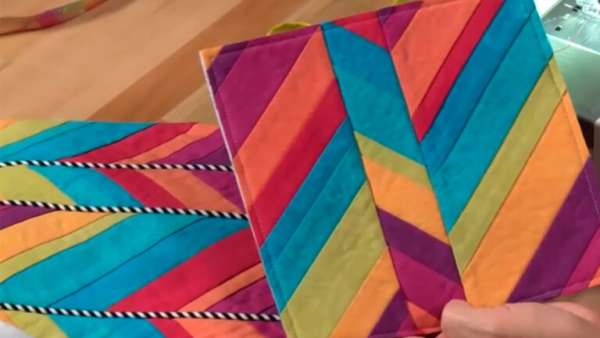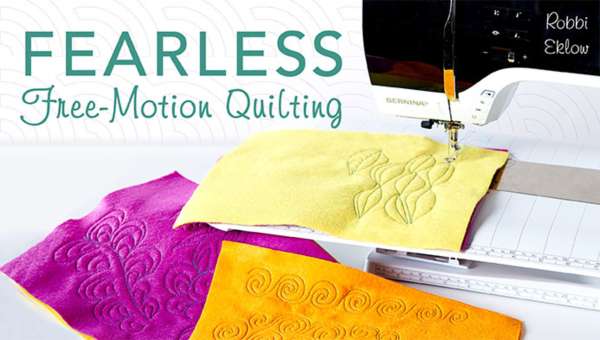-
Turning Old Shirts into Memory Quilts – A Step-by-Step Guide - 18 hours ago
-
Machine Savvy: Tips for Creative Sewing – Online Class - 2 days ago
-
Sunday Spotlight – Doxie Dachshund Quilting Pattern - 2 days ago
-
Kids’ Quilting Workshop: 15 Projects, Oh-So-Many Techniques - 2 days ago
-
How to Make a Scrappy Monogram Tote – Free Project Tutorial - 2 days ago
-
Free Music Note Quilt Block - 2 days ago
-
Sunday Spotlight – Potted Flowers Applique Quilt Pattern - 2 days ago
-
Unleash Your Creativity with “Thread Art” by Lola Jenkins - 2 days ago
-
How to Make a Mini Periwinkle Squared Pillow – Free Project Tutorial - 2 days ago
-
Create Your Dream Sewing and Quilting Studio - 2 days ago
Turning Old Shirts into Memory Quilts – A Step-by-Step Guide
There’s
something
powerful
about
fabric
that
carries
a
story.
A
soft
old
flannel
shirt,
a
well-worn
work
tee,
even
a
button-down
that
once
belonged
to
someone
you
love—all
of
it
holds
memories.
Turning
those
pieces
into
a
quilt
means
you
don’t
just
store
them
away
in
a
drawer;
you
keep
them
close,
stitched
into
something
warm
and
useful.
When
my
kids
outgrew
their
favorite
pajamas,
I
couldn’t
bring
myself
to
toss
them.
Instead,
I
tucked
them
into
a
bin
and
eventually
stitched
them
into
a
quilt
that
still
lives
on
our
couch.
It’s
patchy,
colorful,
and
a
little
mismatched—but
every
block
tells
a
story.
That’s
the
magic
of
a
memory
quilt.
Here’s
how
you
can
make
one
too.
Step
1:
Gather
and
Sort
Your
Shirts
Choose
shirts
that
carry
meaning—old
band
tees,
school
uniforms,
sports
jerseys,
or
dad’s
favorite
plaid.
Cotton
and
flannel
are
easiest
to
work
with,
but
you
can
use
knits
with
a
little
stabilizer.
Pro
tip:
Wash
and
dry
everything
first
so
the
fabrics
won’t
shrink
later.
Step
2:
Prep
the
Fabric
-
Cut
away
seams,
collars,
cuffs,
and
buttons. -
If
working
with
stretchy
t-shirts,
iron
fusible
interfacing
to
the
back
to
give
the
fabric
more
stability. -
Square
off
your
pieces
so
you’re
left
with
clean
sections
of
fabric
ready
for
cutting.
Step
3:
Decide
on
Your
Quilt
Block
For
beginners,
the
simple
square
or
rectangle
block
works
best—it
lets
the
fabric
designs
shine
without
complicated
piecing.
If
you’re
feeling
adventurous,
try
a
nine-patch
or
a
rail
fence
pattern
to
add
a
little
structure.
Step
4:
Cut
and
Arrange
Cut
your
fabric
into
uniform
squares
or
rectangles.
Then
lay
them
out
on
a
flat
surface
or
design
wall.
Play
around
with
placement
until
it
feels
balanced—mixing
colors,
patterns,
and
textures.
Personal
note:
I
like
to
place
the
most
sentimental
fabrics
in
the
center
so
they’re
always
the
focal
point.
Step
5:
Sew
the
Blocks
Sew
rows
first,
then
sew
those
rows
together.
Use
a
¼”
seam
allowance,
pressing
seams
open
or
to
one
side
as
you
go.
Don’t
worry
if
the
edges
don’t
line
up
perfectly—this
quilt
is
about
love,
not
perfection.
Step
6:
Add
Borders
(Optional)
If
your
shirt
fabrics
feel
a
bit
busy,
add
a
border
in
a
solid
or
coordinating
print.
This
frames
your
quilt
and
gives
it
a
finished
look.
Step
7:
Layer
and
Quilt
Make
a
quilt
sandwich
with
your
memory
quilt
top,
batting,
and
a
backing
fabric
(a
cozy
flannel
sheet
works
beautifully).
Quilt
it
simply
with
straight
lines
or
tie
it
with
embroidery
floss
for
a
rustic
finish.
Step
8:
Bind
and
Finish
Add
binding
around
the
edges
and
give
your
quilt
a
final
press.
Now
you’ve
transformed
a
stack
of
old
shirts
into
something
meaningful,
warm,
and
lasting.
Why
Memory
Quilts
Matter
A
memory
quilt
isn’t
about
perfect
points
or
fancy
stitching—it’s
about
keeping
stories
alive.
Every
time
you
wrap
yourself
in
it,
you’re
wrapped
in
those
memories
too.
Whether
it’s
a
quilt
from
your
child’s
outgrown
clothes,
a
loved
one’s
shirts,
or
just
a
pile
of
family
fabrics,
it’s
comfort
stitched
with
history.
And
when
someone
asks
about
that
quilt
on
your
sofa?
You
get
to
smile
and
say,
“This
was
my
son’s
favorite
soccer
jersey”
or
“That’s
Dad’s
work
shirt.”
It
turns
fabric
into
a
story
you
can
share
forever.
















